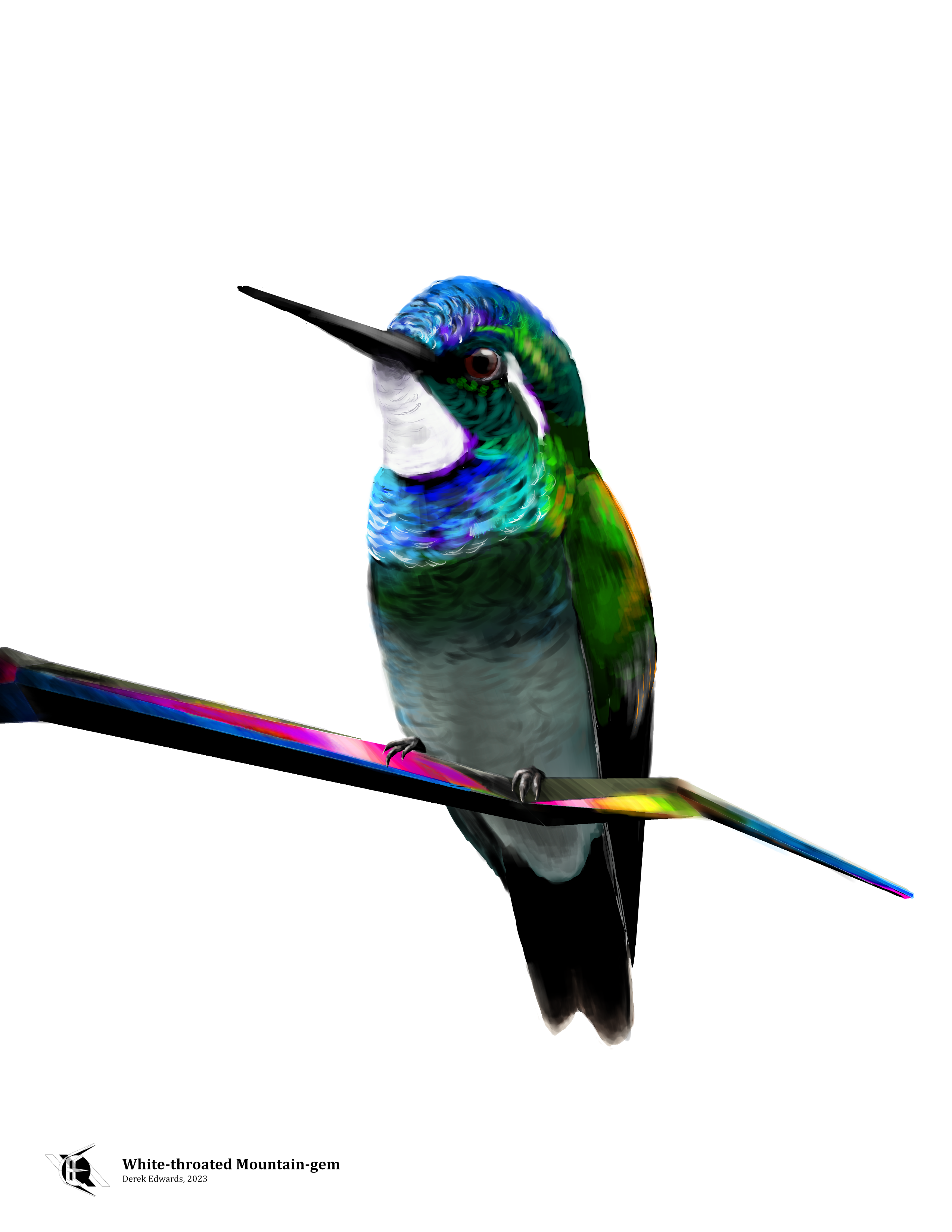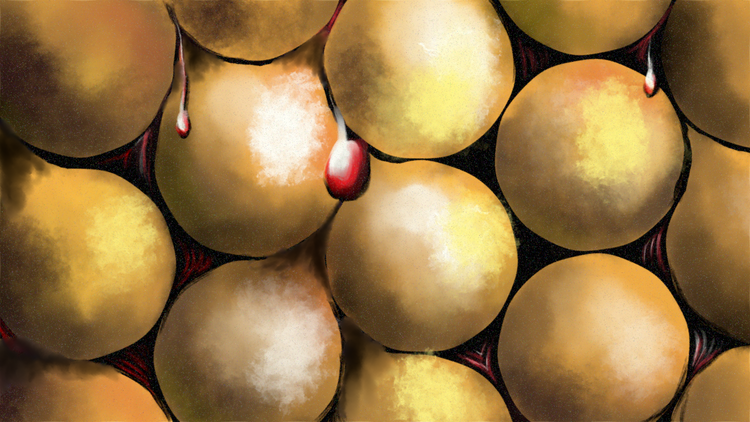
Running Commentary 1/23/2023
Hello,
I was going to feature a recipe this week, but then I remembered that I didn't have a photo of the resulting dish. I'll try to remember to fix it again this week and snap some pictures.
Also, my full review of Season 1 of Andor is up on the main site, so you can give that a look.
Anyway...
Watching...

BattleBots
We continue to get through the first match-ups of the season. Let's look at the fights:
- COBALT v DEATH ROLL - This fight between two very similar robots came down to who got the first hit in. But beyond that, Cobalt is just a bit better designed and a bit better driven, that's how they got that first hit.
- CLAW VIPER v OMINOUS - Ominous is a newcoming Dutch bot that I'm taking as a sign that omnidirectional wheels are the new flamethrower: a weird thing that a few bots have used successfully and which other bots have thus added to their design, to their detriment. Ominous might have some wins later this season, but their match-up against a control bot like Claw Viper really highlit omnidirectional wheels' drawback: low traction. Like I said last week, traction matters. Claw Viper has made some big upgrades in the off-season, which also helped it here.
- COPPERHEAD v BLOODSPORT - I was really unsure who to expect to win this one, and I got my answer almost immediately. Bloodsport made a complete rebuild since last season, and it got trashed in one hit, getting tossed across the arena and bursting into flames right at its team's feet in what was probably the funniest moment of the night.
- LOCK-JAW v MALICE - This was probably the least engaging fight of the night, a drawn-out slog between two bots unable to do much to the other. Malice lost due to weapon failure, and Lock-Jaw's weapon almost broke down as well. Donald Hutson's driving saved him, but couldn't take Malice down.
- LUCKY v TRITON - Triton is technically a new bot but really it's just Deep Six sideways. The problem with being Deep Six sideways is that you're really just Tombstone but less maneuverable. Lucky, like everyone else in the sport today, knows that sturdy, slanted armor is Tombstone's kryptonite, and that goes for Tombstone-likes as well.
- SKORPIOS v JACKPOT - Jackpot arrived with a new self-righting mechanism that, sadly, didn't work. Skorpios flipped them over and, not usually being a team to realize when they've won, gave a few strikes to Jackpot's underbelly before backing off and letting them be counted out.
- HYDRA v ROTATOR - Rotator was having a bad time in the pits, having lost something in their control systems that left the bot unresponsive for hours, delaying the filming of their match against Hydra. Once the bot was working, it didn't much matter as Hydra spent the whole match tossing it around. Rotator appeared to want under Hydra for a chance to strike its belly, which is why they started "upside-down" with their weapon on top. They never got the chance, eventually getting a fork caught on a wall spike. Altogether is was another disappointing loss for Rotator.

The Bad Batch
Season 2 has its first filler episode but...it's a really good filler episode? Yeah, here are my notes:
- This episode didn't really have anything to do with the rise of the Stormtrooper corps, which is why its a "filler" episode. But it is a pretty entertaining episode. It's very reminiscent of the podrace from The Phantom Menace, which was, of course, the inspiration for Star Wars Episode 1 Racer, a video game I spent much time playing growing up, so I may have appreciated it more than you did.
- Add Ernie Hudson and Ben Schwartz to the List. Schwartz actually has kinda been in Star Wars before, as he did a little voicework for BB-8 and also was a stormtrooper-suited extra in The Force Awakens, but those don't really count as credited roles.
- Cid bringing a teenage girl as a bodyguard may have had something to do with how she got taken hostage at the racetrack.
- I liked that this episode just got to focus on Tech and what he brings to the team. During these low-stakes episodes, I think it's a good idea to split the team up a bit so that we can concentrate on specific Bad Batchers like this.

Bird of the Week
Today, we have another hummingbird. I haven't drawn nearly as many hummingbirds as I probably should have by now; of over 350 species, I'v only ever drawn 3, and this is only the second hummingbird drawing I could feature as Bird of the Week, and the only one, so far, that I've done digitally. THere are reasons for this, chief among them being the fact that hummingbirds are rather hard to draw. There are a few characteristics that make birds hard to draw: intricate sports/stripes (which are time-consuming to do and where can make a portrait look noisy), a coat of feathers that stand distinct from one another. (also time consuming and prone to looking over-detailed), bright, vivid colors, especially greens (which can be difficult to shade and which will make a bird look fluorescent and fake if shaded improperly), and irridescence (which is sometimes okay but which has been the hardest part to achieve in several of my drawings, this week's included). Hummingbirds are, generally, vividly colored, green, with individually-distinct, irridescent feathers; if they had a bunch of spots, they'd be the ur-difficult-to-draw birds.
But, I can't avoid them entirely, because they're pretty, and popular, and anyway, I can take the occasional challenge. So here's the White-throated Mountain-gem. This is a mid-sized hummingbird, that is to say, this is a very small bird, measuring less than 5 inches long. Males have the namesake white throats as well as shiny blue feathers on their chests and crowns, while females are a rufous brown from their chins down to their bellies. Both are emerald-green on the back. Like all hummingbirds, white-throated mountain-gems can hover, and feed on a diet of nectar and insects, both of which can be found in flowering plants.
Like most tropical birds, white-throated mountain-gems do not migrate seasonally. Their range is largely limited to Chiriquí Province, in western Panama, though it may extend further into neighboring Costa Rica depending on whether you consider the gray-tailed mountain-gem a separate species or not; the various ornithological authorities are presently divided on that question.
Actually, the fact that these birds hail from Chiriquí Province means this is the second week in a row that I get to mention an out-of-the-way place's weird history involving Abraham Lincoln. You see, Lincoln was a supporter of something called the American Colonization Society, which had been established in 1816 by the Presbyterian clergyman Robert Finlay for the purpose of freeing African and African-descended slaves in the United States and sending them someplace, either back somewhere in West Africa or else somewhere else in the tropics. That second goal put them at odds with most other abolition groups, who wanted slaves freed and then integrated into American society. The ACS had a major role in the establishment of Liberia, a West African country founded by freed American slaves whose early days...I don't have time to get into the history of Liberia but its founding was pretty rocky and it validated a lot of the ACS's critics. Anyway, Lincoln, early in his presidency, was eager to make a second Liberia, this time in Central America. His favored location was Chiriquí Province, which was then part of the Grenadine Federation, which was going through its own civil war at the time. This colony, which was to be called Linconia, never really took off, and (after conversation with Frederick Douglass, a former slave and opponent of the ACS) even Lincoln abandoned the idea and switched to advocating integration.
"White-throated mountain-gem" is a bit more poetic than the bird's name in Spanish: "colibrí monteñes gorgiblanco", which means simply "white-throated mountain hummingbird", with "colibrí" being borrowed into Spanish and some other languages from a Caribbean language. To science, the bird is Lampornis castaneoventris, the "chestnut-bellied torch bird", a name that indicates that the first examined specimen was female.
Curation Links
Reading a Fake Version of My Own Book | A. J. Jacobs, The Atlantic
“Although I’m not proud of it, as an author, I often engage in the masochistic ritual of checking my Amazon ranking and reviews. So back in the spring, shortly after my latest book came out, I typed “The Puzzler” by A. J. Jacobs into the Amazon search bar and pressed “Enter.” Up came my book, of course. But to my surprise, so did several other books. Six of them. These books had titles such as Summary of The Puzzler by A.J. Jacobs and Workbook for The Puzzler by A.J. Jacobs. They ranged from $5 to $13.”
The Math Behind Wordle Guesses | Pradeep Mutalik, Quanta Magazine
Did you get into Wordle? Are you still at it? Like most games, the probability of winning Wordle can be mathematically described. What’s the best word to start with? How many guesses will it typically take? Are your friends cheating? Read to find out.
The extraction of the excruciating bladder stones | Thomas Morris, Wellcome Collection
Part 1 of a series on “Revolutions of Surgery” from the website of a British health museum, this article covers the ways large bladder stones were dealt with in the days before modern ultrasonic disintegration methods. Like most early surgeries, they were highly unpleasant, though presumably less unpleasant than living with bladder stones.
The Man Who Lost the Sea | Theodore Sturgeon, Strange Horizons
[FICTION] Originally published in 1959, this story is certainly part of the good 10% of science fiction. To say what classic story it roughly emulates would be to spoil it. I’ll just say that it’s about a man lying in the sand.
See the full archive of curations on Notion






Member Commentary